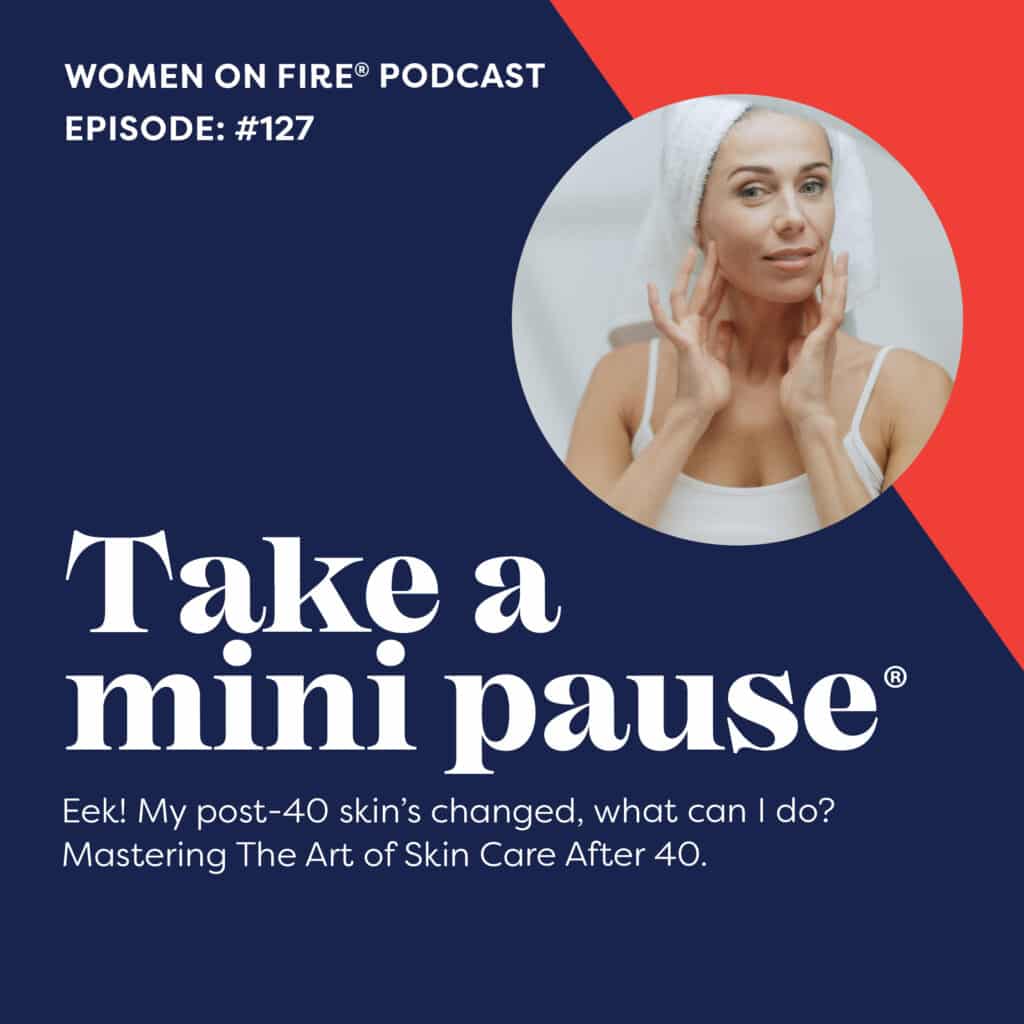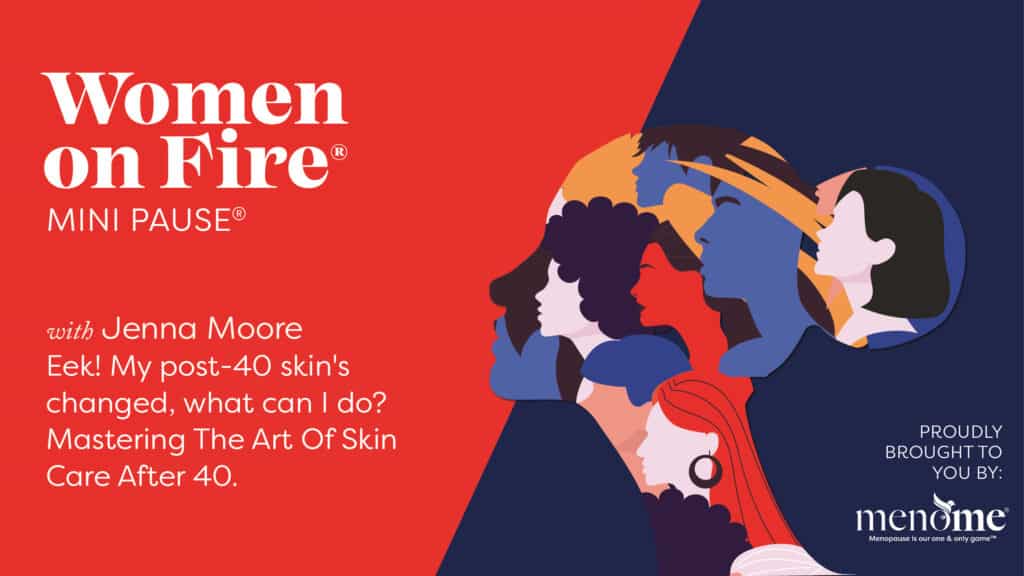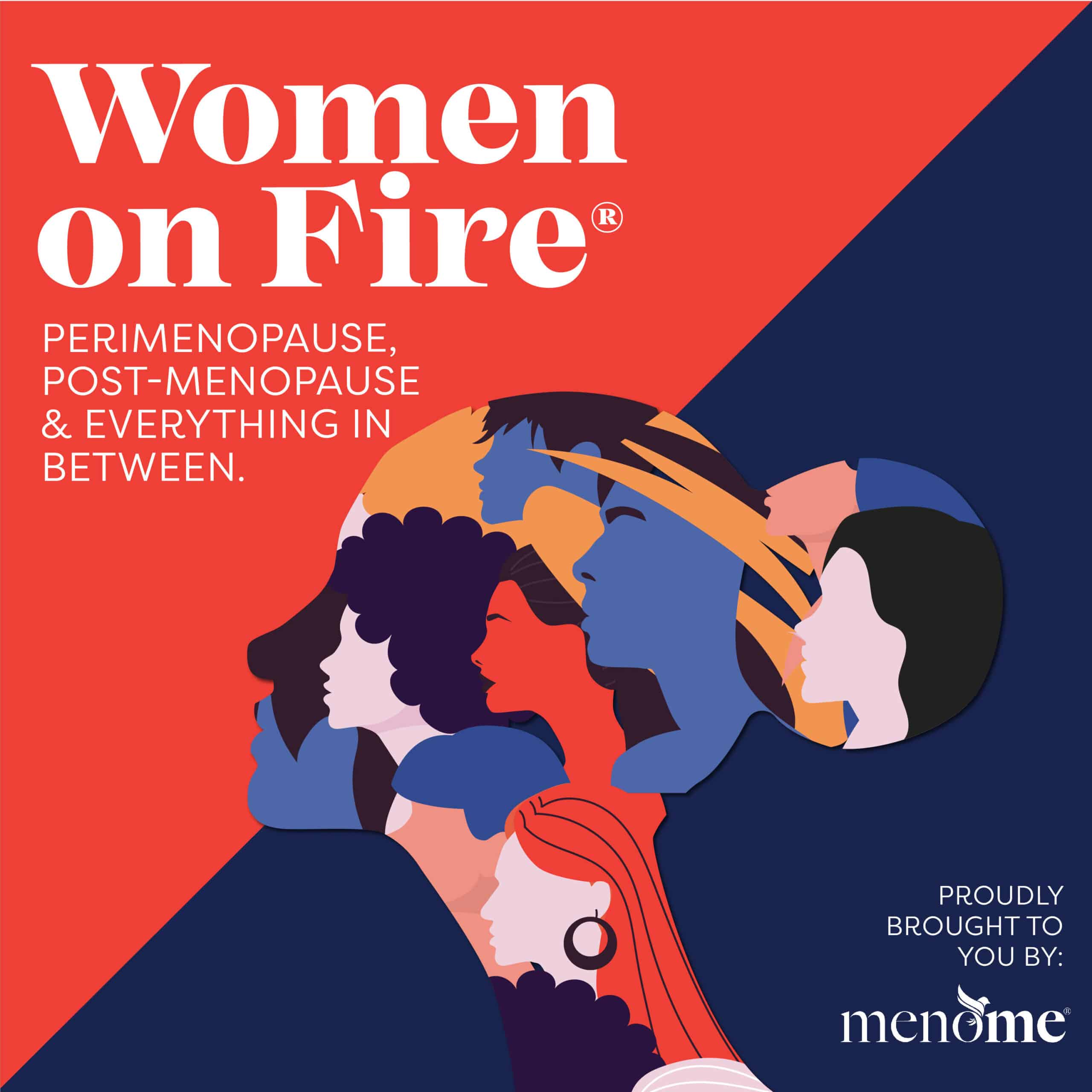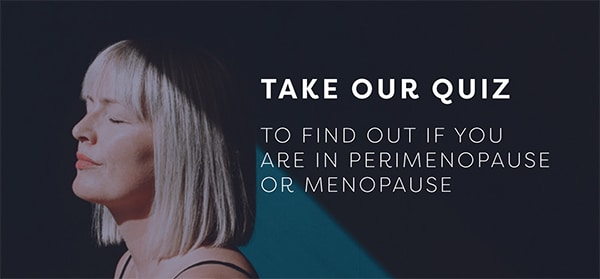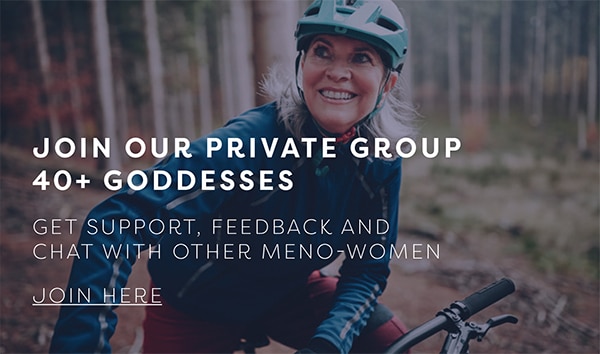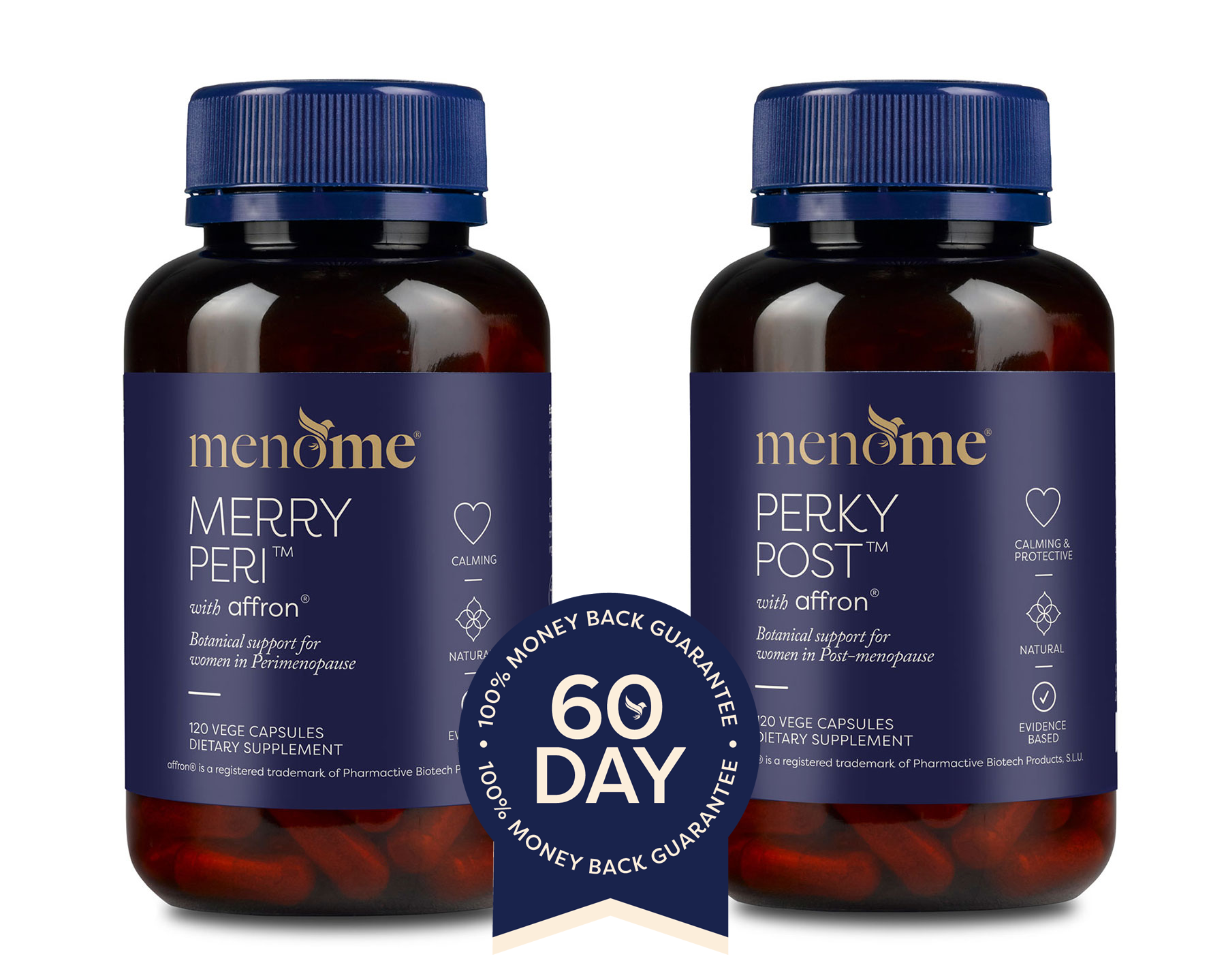Podcast Episode
In this episode, we talk about
- 00:00 Introduction
- 01:02 A Time Of Massive Skin Changes
- 01:43 The Estrogen Factor
- 02:16 Skin Density, Plumpness & Hydration
- 04:09 What Are Collagen & Elastin?
- 05:30 What Is Hyaluronic Acid?
- 07:20 Argh:!Dehydration, Sensitivity, Crepey Skin, Itchy Skin, Pigmentation & Acne
- 12:54 Skin 101
- 14:33 The Layers Of The Skin
- 17:20 15 Ways To Look After Your Skin During Peri & Post-Menopause
Episode Resources:
- Read: 6 Ways To Tame Itchy Skin here
- Read: How To Soothe Ichy Skin (including your va-jay-jay) here
- Read: How To Have Fabulous Skin After The Age 40 here
- Listen: The Impact Of EDC’s & Xenoestrogens On Menopause here
- Watch: How Gut Health Affects Your Menopause Journey here
- Happy Go Tummy® here
- LotsaLocks® here
Video Version
Transcript
Jenna (00:20.894)
Today we’re going to talk about skin. I was with a group of women of a certain stage recently and the conversation turned skin. And that does happen quite often where women are lament the fact that their skin has changed.
And I have to tell you that starting in peri, menopause is a time of massive skin changes, absolutely massive, but there’s a reason for that. So let’s talk about it because there’s lots you can do, which is the good news, right?
So those pesky hormones, well actually it’s estrogen or estradiol, which is the most dominant form of estradiol we have during our reproductive years. And as we’re going to menopause, that’s declining. And as we’re go to post -menopause, it will then get taken over by estrone, which is a weaker form of estrogen than estradiol. It’s all about the estradiol leaving our body. So that’s what causes the change because it’s a big contributor to the production of a protein in our skin called collagen.
But also elastin and therefore the skin’s elasticity, density, plumpness and skin texture. So it’s a big deal. But that’s only part of the equation. There’s lots of other things going on as well.
But skin does lose up to 30 % of its collagen in the first five years postmenopause. And before and after that, about 2 % of collagen each year.
So it’s quite a lot of collagen production decreasing along with moisture levels which are known in BeautySpeak as natural moisturising factors (NMF). And these include hyaluronic acid, sebum and lipids which are skin oils. Sebum is like a waxy moisturising barrier.
Jenna (02:42.846)
But we are going to talk about the skin barrier as well. So what happens to that barrier is that it also begins to break down and menopause. And when that happens, certain skin conditions may emerge, which I’ll share with you shortly.
But first of all, I just want to say because of all these factors, if you are looking to improve your skin, what you want to do, your goal or our goal, is to try and increase the production of collagen and elastin and hyaluronic acid in our bodies and to nurture and repair that skin barrier wall because it’s made up – like – think of a bricks and mortar wallk, that’s what the skin barrier is looks like and that’s what’s breaking down.
So what are collagen and elastin? Let me explain them to you. They are protein strands in the skin and collagen, as I said before, is a huge contributor to how plump and dewy our skin is.
Elastin meanwhile, supports to our elasticity or how firm and taut our skin is. So menopause along with environmental factors like ageing, excessive sun exposure, drinking alcohol, smoking, begins to stop or slow their production in its tracks.
And then the protein strands can become cross -linked rather than smooth leading to wrinkling and sagging. Now hyaluronic acid, let’s talk about hyaluronic acid for a moment, it’s amazing. Studies have shown it can hold a thousand times its weight in water so it’s a huge hydrator.
Jenna (05:08.478)
But it’s actually not an acid so its name is a bit misleading. It’s a lubricating, moisturising substance that’s naturally present in the skin and in our bodies. So as a result of its very existence it helps keep levels of collagen and elastin up. It’s why it’s also used as a gold standard moisturiser or hydrator in a lot of skincare.
It’s also these days, it wasn’t always, but it’s also usually the ingredient of choice in injectables like for lip fillers and when people get lines and things filled in. And when it’s used in that way, it’s usually used in a form that is made in a petri dish in a lab.
So it’s a wonderful ingredient for anything to do with the skin. But as we grow older and as we go through menopause, our natural levels of it do reduce. So we want to build that up too. And I’ve got – by the way – there’s more!
Because estradiol is so important for our skin, and it’s very, very important for building up and keeping that skin barrier well, that bricks and mortar wall skin barrier that I was telling you about before.
So when these things are reducing or there are issues with the skin barrier, some women may notice that their skin – and to be clear, we’re not only talking about the face here, we’re talking about the entire body and that includes the vagina because that’s skin as well. So they may notice their skin is getting dry and dehydrated, which can be two separate things, although they sit pretty close on the skin condition scale, but they can require different treatments. Others may notice that their skin becomes more sensitive or crepey. I hear that a lot. A lot of people don’t like having
Jenna (07:32.986)
crepey skin and one incredibly frustrating result of this process can be that it becomes very itchy. We can’t get enough, we can’t scratch deep enough and that’s to do with histamine reaction as well and that includes our vagina and that can be crazy-making. Vitamin C can be helpful there.
I will also add an article in the show notes for you. Another thing that can happen at this time and due to all of these occurrences is an influx of pigmentation or spotty, what’s often known as age spots, but they’re not, they are pigmentation spots. But estradiol is also very important for the production of melanin.
And all of us, whether we have dark skin or light skin, have melanin in our skin. And normally that is produced nice and smoothly, but with the reduction of estradiol we can become more spotty. So pigmentation is treatable, but we’ll talk about that in a little bit.
And if the skin barrier, that bricks and mortar wall, is in disrepair it can also lead to things like skin conditions like rosacea, eczema, rashes and psoriasis. So there’s a lot going on and the paradox here is that with all this dryness and sensitivity you could also find yourself experiencing zits for the first time in year.
And the reason for that is that we still have androgens or testosterone. – male sex hormones in our bodies and they haven’t declined as much yet so the ratios are all out of whack with estrogen and progesterone because testosterone is very important to women as well. So this can trigger zits.
Jenna (09:55.262)
So, it’s a huge subject and there’s a lot going on like I said but what makes it even bigger is that we live in a time where there are so many options available to us, be that skincare, be that treatments, be that ingestibles. And by that I mean supplements and powders and things. So we’re spoiled for choice. The world is our skincare oyster. But most of the feedback and surveys we hear show you’re overwhelmed by it all, you find it confusing. And I think that’s perfectly understandable.
I mean, I’m a former magazine beauty editor. I’ve had thousands and thousands and thousands of products and treatments across my desk or under my research or study hat over the years. And because the beauty industry keeps expanding and expanding, I get confused too. It’s a bit like technology. You’ve got to be right there and to get the latest and the greatest or else you get left behind.
So it’s quite amazing but before we dive in I just want to say to you to take heart because we can break it down and simplify it a little bit or you can just pick and choose what nuggets you might like to take away. Things you feel could be useful to you. I am very aware that there is a cost of living crisis going on and sometimes this whole beauty hoopla skincare thing can get quite pricey.
So I’ve tried to do it in such a way that you can take the information and go and find something that includes what might help you or support you at a price range that suits your purse strings. Because we all have different budgets, don’t we?
Plus be aware that if you’re still in your 30s, this is a fantastic time to do prepping because it’s a bit like perimenopause. The stronger the foundations as you go in to the changes, the smoother the ride and the better off you’ll be. The more you’ve got to work with really.
So let’s go on and look at the skin.
Jenna (12:20.67)
You’ve probably heard before that the skin is our largest organ and it’s incredible to think that we have about two metres of it over our body and it can weigh about three and a half kilos. It’s quite incredible. I think that’s about seven pounds.
It’s quite acidic. It usually has a pH level of about 4 .5 to 5 .5 and apparently after menopause that can even rise a little bit. So the other thing is, and this is more recent because you will have heard of your gut microbiome? I think we all would have been hiding under a rock if we hadn’t heard that by now. But what you may not have heard is that the skin has its very own microbiome as well, which is why you might see some probiotic skincare out there now catering to that.
And this microbiome also goes through changes during peri and post-menopause also so that’s something to be aware of.
But the skin’s biggest job is to act as a waterproof suit of armour and help us keep moisture in, help protect our organs, help regulate our body temperature. It’s an amazing suit of armour to have and a wonderful thing so it deserves a lot of TLC. I think so anyway.
So it’s made up of three layers okay.
There’s the epidermis which you’ll know of it’s also known as the stratum corneum. This is also where that skin barrier – the bricks and mortar wall is – and on this layer are our older skin cells.
And then underneath there, and the skin’s thickest layer, is our dermal layer. And then the third layer, the innermost layer is the hypodermis or the subcutaneous layer.
So our epidermis is also known as our skin barrier or our natural moisture barrier. Skin is made up of a whole lot of keratinocytes and melanocytes, and all the good things like fatty acids, ceramides.
Jenna (14:47.102)
But like I say, the epidermis is home to our older skin cells and they can be stacked a bit like that brick and mortar wall I was telling you about, that can break down during menopause. So if this happens then that skin, this epidermis layer may become more sensitive, dehydrated,or red. So we must nurture it and treat it with lots of tender loving care because yeah, it’s one of our most precious biological gifts.
Jenna (15:32.606)
It’s one of our most precious biological gifts. So the dermis or the dermal layer, as I said, is the thickest layer of our skin, but it thins as we age. In its role, it supports the epidermis and it’s home to the collagen and elastin we’re talking about and beautiful oily sebaceous glands and nerve endings and hair follicles.
The hypodermis, that innermost layer of skin, helps join our skin, connects our skin to our muscle and bone. And also we store fat there, which is why you might’ve heard the term subcutaneous fat. And it helps, that’s the area that helps regulate body temperature.
in conjunction with the hypothalamus in the brain because the hypothalamus in the brain is the master of our body temperature as well which is relevant to all of us who may experience hot flashes or may be experiencing hot flashes.
So let’s break this down to a few take -home basics.
I say a few because I did have in mind doing 3 -5. I’ve ended up with about 16 because they’re all important. So I’ll share them with you and take from them what you will.
Jenna (17:27.166)
So number one, use a broad spectrum SPF sunscreen because UV rays from the sun are one of the biggest causes of premature aging, not to mention pigmentation and the key with pigmentation is to prevent it as much as possible so you don’t have to try and work to get rid of it. And also skin cancers because we’ve got to be very aware of the incidence of skin cancers as well, particularly in New Zealand because it’s one of the biggest killers. And they can fester away there for a long time and then manifest later.
So broad spectrum means that the sunscreen filters out both UVA and UVB rays. You can remember that by UVA being aging, UVB being burning and you don’t want either of those getting through. Choose a SPF factor of 30 plus or higher. You won’t find 100% blockage but 30% or higher is a good rule of thumb.
And it’s a great idea. I would very much encourage you to choose a natural blend because that tends to sit on the surface of your skin because your skin is a big mouth. And if you choose a chemical-based brand, it will be ingesting a lot of chemicals.
One of our most popular mini pauses is on about xenoestrogens and endocrine disrupting chemicals. So I’ll put a link to that in the show notes. But that’s something you want to avoid as much as possible.
At the end of the day, sunscreen is one of the biggest skin saviours we have to date in the current world.
Now some ingredients to support the skin barrier. This is the biggest star, there’s the most data behind that, is niacinamide which is vitamin B3, ceramides, fatty acids like plant-derived squalene which we have naturally in our bodies. The plant-derived can come from olive oil. Also, hyaluronic acid, that big star, and vitamin C, vitamin C is wonderful for skin. Retinol is great for skin health too.
Jenna (19:48.606)
Retinoids – or the vitamin A family – have been scientifically shown to reverse sun damage but they’ve also been proven to strengthen skin and stimulate collagen. The thing with retinoids is you need to use the right one because there’s a family and you need to use it in the right percentages, it’s also a good idea to use a good brand here.
Of course, it’s budget dependent and it does take a bit of education to know what’s going to be active. Environ do a very very good one because Dr. Des Fernandes pioneered this technology really.
And number four vitamins to support the skin barrier function are antioxidants such as vitamins A, C, E, Niacinamide again which is B3 and that helps synthesise proteins and ceramides. Biotin which is vitamin B7. Now that plays a role in keratin production and vitamin D which we associate with stronger bones and maybe immunity and mood but it also has a role to play with the keratinocytes in the skin.
So vitamin D is a goodie as well.
Number five I would suggest working from the inside out because good skin is an inside job.
What’s happening with your gut? What is happening with your liver? And what is happening with your overall vitality? Because all of these things will have an impact on how your skin looks. So they are super super important for skin and I cannot say it loudly enough that it can be an inside job. Well inside out job, working within and working without.
So one way you can do this – and this is my 6th tip – is choose an anti-inflammatory Mediterranean style diet. There’s so much data on how good this is for women anyway but it certainly will reflect on your skin.
Jenna (22:14.238)
And because it’s anti -inflammatory, it’s good for conditions such as rosacea and acne, which can be inflammatory. Estradiol, the form of estrogen that is declining during menopause too, is also famously anti -inflammatory. So as it departs, we become what is known as pro -inflammatory.
So we really want to try and keep it as – keep our whole body actually – not just our skin, as uninflamed as possible. There’s a new term out, or a fairly new term called inflammaging. It’s very damaging.
So fill half of your plate with vegetables, drizzle them with extra olive, virgin olive oil, use quarter of your plate for a low GI, good starch carbohydrate such as sweet potato (which is known as kumara in New Zealand) and the other quarter for a nice lean protein. That’s a very good rule of thumb to follow.
Some antioxidant-rich foods your skin will love include beta carotene, amino acids, polyunsaturated fatty acids. Now you will find these in avocados, kumara/sweet potato again, red and yellow capsicums or bell peppers they’re called in the States, tomatoes, green tea, green leafy vegetables are always a winner, berries, dark chocolate and nuts and seeds. So it’s plant-based although the Mediterranean style diet aslo tends to have a little bit of fish, maybe a glass of red wine but always with food.
Number eight for gut health, eat lots and lots of fresh vegetables because these are the pre-biotics that your gut microbiome thrive on. And then fermented foods like kimchi, sauerkraut, kefir, yoghurt if you can tolerate it. These are all wonderful for optimising your gut health.
Jenna (24:38.43)
Number nine, take a probiotic, but be aware that if you’re used to eating the standard Western diet you may take a few days to get used to that. Especially if it’s got certain ingredients in it.
Number 10 for your liver, because your liver is your biggest detoxifier and one of its jobs is to detox excess hormones. And if it can’t do that it will recirculate them which will show on your skin among other things. So it loves bitter greens – all greens actually – like rocket, broccoli, kale. Drink lots of pure filtered water and green tea, a squeeze of lemon or lime and water and that’s great for your digestion too. And lay off alcohol and caffeine which are liver loaders.
At least until you’ve got your skin to where you want it to be or until you’ve improved your skin lay off those. I know that can be hard but it will repay you in space.
Number 10 is ditch the refined and added sugars. I cannot, cannot, cannot say it enough, it’s not our friend! But when it comes to the skin it is our foe. It causes your insulin to spike and it creates inflammation, which of course, we’re trying to avoid. It also triggers something called GAGs and all of these can lead to sagging and wrinkling. So it is definitely not your friend, right?
And number 11 just going back to skincare for a moment. Less is more and always look for gentle and hydrating. Like a gentle hydrating cleanser, if you use it a treatment serum can be great and that’s where your retinoids might come in depending on your budget. Moisturiser definitely with hyaluronic acid, some antioxidants would be wonderful and sunscreen.
Jenna (27:01.118)
Because we are more mature, as I said that outer layer of skin has your older skin cells and when you’re younger they, what’s called desquamation, gets rid of them naturally around about every 28 days. So an exfoliation treatment or product may help you give them a boost to send them on their way because it will make your skin more hydrated and radiant.
So that’s a great idea to do once a week and also a treatment mask. You can get hydrating masks, nourishing masks, rejuvenating masks, all kinds of masks. So one of those once a week would be great as well. The key word here is gentle.
And 12. Vitamins to support the skin (oops think I doubled upn here)! Vitamin A, again niacinamide, which is vitamin B3. To be clear there, that helps with the synthesis of proteins and ceramides. And then your biotin, because that plays a role in keratin, that’s your vitamin B7, and that’s great for hair, but it’s also good for skin. And vitamin D, most people associate vitamin D with bone health, but it also is very good for keratinocytes in the skin as well as immune function which is important to our skin.
Number 13. Those same antioxidants may be helpful with pigmentation along with retinoids, vitamin C which is lightening and brightening and something called a tyrosinase inhibitor such as kojic acid. You can get hydroquinone as a tyrosinase inhibitor as well. You need to be a little bit careful with things like that. Red light therapy has also been shown to help. But really, it’s quite a complicated. You need a specialist here and I would recommend seeing a beauty therapist or a dermatologist to help you out or certainly to make recommendations.
Jenna (29:23.71)
And on that note, skincare has come such a long way, even in the last decade or so, it just keeps innovating. It’s amazing. And if you do have the budget, because as I said, I’m very budget aware, if you do have the budget, it’s a brilliant idea to see a registered beauty therapist, dermatologist and or an aesthetic medical practitioner who works with injectables and other treatments. Depending on what your goals are and what you’re looking for, this can repay you in spades.
Because things like microneedling, peels and laser treatments all require professional practitioners behind them to treat you. But they can help with the production of collagen and elastin.
And injectables are not just about the infamous Botox, which is a muscle relaxant. fillers and fat lips anymore. There are new kids on the block like skin boosters. And what they do is inject a very fine form of hyaluronic acid just under the superficial layer of the skin to increase dewiness and they can be used to define or they can be used in a broader, wider treatment area. So it’s very important you see a professional for treatments like that.
And as I say that’s budget dependent, I just want to know that you to know that they are available if that’s something that you can look at doing.
And of course, I think it probably goes without saying that giving up smoking, if you smoke, is a no -brainer. It certainly robs you of vitamins and minerals but it does no favours for your skin. Also, be aware that alcohol is very dehydrating for the skin as well.
Jenna (31:48.222)
And, finally, I want to tell you about our sponsor MenoMe® – two of their products – which fit in beautifully here. So I cannot close off without sharing them with you.
Happy Go Tummy® is amazing for your gut health. So therefore amazing for your skin. It contains two ingredients.
It’s a synbiotic, which means it’s a combination of prebiotic and probiotic, which is a wonderful thing because it’s covering off both the bases that you want to cover. Livaux® in the formula is derived from kiwifruit and that’s the prebiotic. It’s got some amazing data behind it. The probiotic is L. Rhamnosus, and I never say this well.
That’s derived from a cheese. Going back to Livaux® from kiwifruit, I think it’s one of the only ingredients that’s been shown to increase F -Prau, a bacteria called F -Prau, and that is not the technical name, that is just the shortened version that’s easier for you to say. And anti-inflammatory butyrates. Now F -Prau is considered the marker of a healthy gut.
And reduced levels actually of F. Prau have been found in people with IBS and IBD, respiratory conditions such as COVID, colecterol cancer and several other conditions. There is a webinar on the MenoMe® website and I’ll put a link in the show notes to that for you. It will tell you more about Livaux® and F. Prau.
And then there is Lotsalocks®, which is amazing. As I said, I’m a former beauty editor and I have tried thousands of products in my lifetime. And this one I rate, it’s right up there. It only contains two ingredients. One is an ingestible keratin called Keragin-IV®, sourced sustainably from the wool of sheep.
Jenna (34:15.966)
And then there is Biotin, Vitamin B7, which you’ve heard me talk to talk about during this episode as well. It helps to anchor – because as we go through menopause we can experience hair thinning and hair loss and a lot of hair shedding – so LotsaLocks® helps anchor the hair into the hair follicles.
It also gives you the correct balance of amino acids in your nails, which is a great thing and there’s a lot of keratinocytes activity going on in there as well as the skin. The data also shows LotsaLocks® triggers the production of collagen IV and collagen VII, which is in the junction between the dermal layer and epidermis.
So that’s a great thing and they point out its very helpful in the neck as well. And I know a lot of ladies are a wee bit concerned about their necks as their skin changes happen.
I hope this episode has been helpful. If you have any questions, please don’t hesitate to get in touch with me.

